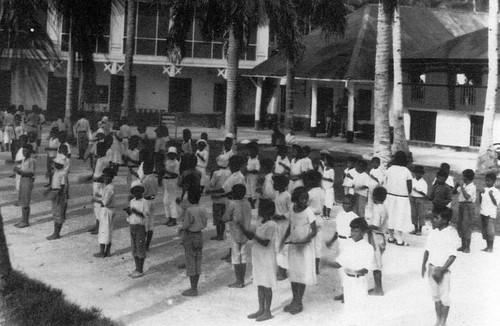Benevolent assimilation
Following the Treaty of Paris in 1899 that ended the four-month Spanish-American War, the United States emerged as a colonial nation and Pacific power. American sovereignty over former Spanish territory—the Philippines, Guam, Puerto Rico, and portions of Cuba—was internationally accepted despite the on-going debate between isolationists and expansionists that gripped the US Congress.
US President William McKinley issued Executive Order 108-A on 23 December 1898, placing Guam under the control of the US Navy and, a month later, Captain Richard Phillips Leary was tapped as the island’s first US Naval governor. Leary was at the heart of America’s renewed spirit of Manifest Destiny, yet his instructions on how to govern the island were direct:
The needs and desires of the (US) military on Guam took precedence over all matters in the administration of the island.
Conforming to his duties of benevolent assimilation, Leary, a career line officer, Civil War veteran, and devout Protestant issued a series of general orders, including General Order No. 12, signed on 22 January 1900, that pertained to public education:
- The system of public education in this island is hereby placed under the supervision and exclusive control of the Government, and all necessary expenses for the maintenance of the public school customs will be defrayed by the Government.
- Religious instruction in favor of any particular church or creed is prohibited and all religious training heretofore required by the late school customs or rules must be eliminated from the course of instruction, as the proper place for religious teaching is the home-circle, church, chapel, or Sunday school.
- All children between the ages of eight years and 14 years must attend school, unless excused therefrom by competent authority for good reasons that interfere with their attendance.
- Instruction in the English language will be introduced in the public schools as soon as suitable teachers can be provided, and it is expected that the present force of native teachers will cheerfully and harmoniously cooperate with the teachers of English in order that the greatest benefits may be derived by both scholars and preceptors.
To further illustrate the mentality of the day, Leary followed this civil order with General Order No. 13, which stated among other things,
All residents are recommended to utilize every available opportunity to learn how to read, write, and speak the English language, thereby improving their own mental condition as well as preparing themselves for assisting their children who are required by law to attend school.
Consequently, the American public school system was designed to culturally transform the Chamorros to accept American ideas and ways, but this would be no easy feat to accomplish.
Video
Featuring a clip from the Governor Willis W. Bradley Film, 1929-1931:
School Drills
For further reading
Carano, Paul, and Pedro C. Sanchez. A Complete History of Guam. Rutland: Charles E. Tuttle, Co., 1964.
Del Priore, Maritza R. “Education on Guam during the Spanish Administration from 1668 to 1899.” EdD diss., University of Southern California, 1986.
Farrell, Don A. The Pictorial History of Guam: The Americanization 1898-1918. 2nd ed. Tamuning: Micronesian Productions, 1986.
Searles, Paul J., and Ruth Searles. A School History of Guam. Hagåtña: Naval Government Print Shop, 1937.
Underwood, Robert A. “American Education and the Acculturation of the Chamorros of Guam.” EdD diss., University of Southern California, 1987.




